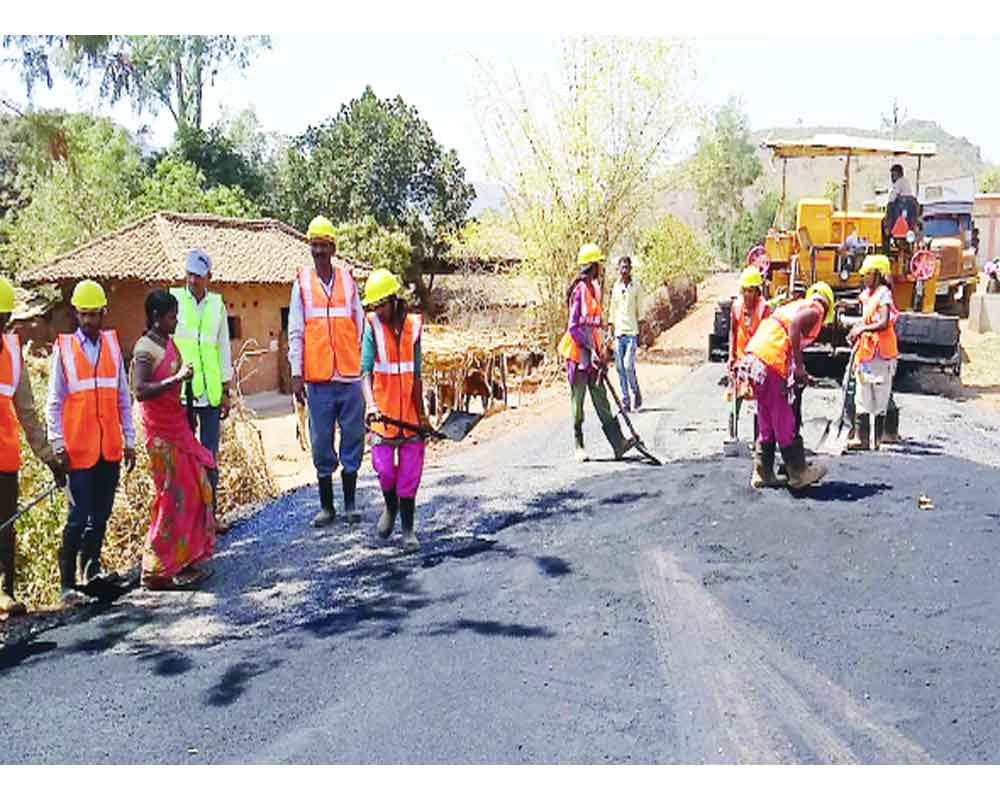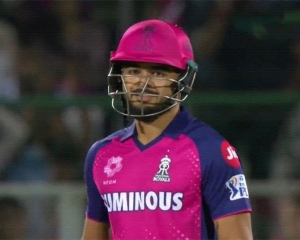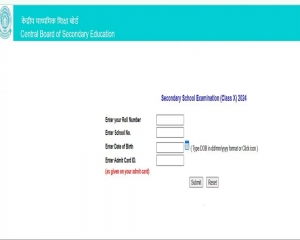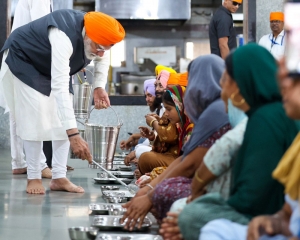The new practice of releasing only a quarter of the budgeted amount to States curbs cash surplus. Remaining amount is released after the given money is utilised
Overborrowing by governments despite having surplus cash has been a perennial problem in our public financial system. It arises because of the peculiar nature of government accounts. Under the government accounting system, all the taxes and borrowings raised by the government go to the Consolidated Fund of the Government while all other amounts received by a government, say from provident or pension fund contributions of employees, or post office deposits etc. from the public go to an account cammed Public Account. While disbursements are made from the Consolidated Fund through budgets, governments do not have much control over deposits and withdrawals from the Public Account.
The net accrual to the Pubic Account is merged with the cash balance of the government and is available for financing its Gross Fiscal Deficit (GFD) if its borrowings on the consolidated fund are insufficient. Additionally, the government may also draw from its cash balance to meet the GFD requirements. The surplus cash balance is the difference between the total financing raised by the government from all these sources less the GFD requirements. While the borrowing under a Consolidated Fund can be adjusted according to needs, the surplus in the Public Account is totally beyond the Government’s control, and this is what leads to over-borrowing.
The merger of a public account with the cash balance leads to the problem of over-borrowing. RBI is the banker to both the Central and State Governments and every Government must maintain a minimum cash balance with it. If the actual cash balance falls below the agreed minimum on any day, the deficiency is made good by taking normal and special ways and means advances or overdrafts from the RBI. If the specified minimum cash balance is exceeded by a state, the surplus is automatically invested in 14-day Intermediate Treasury Bills (ITBs) of the Government of India whose returns are much below the RBI repo rate and significantly lower than the rate of interest the government pays on its market borrowings and hence constitutes a negative carry for the government. Since public account balances, being merged with the cash balance, could be invested only in treasury bills, the option of investing them in other more attractive instruments is not available. Thus, the states lose by way of paying higher interest on market borrowings while earning much less from its surplus cash balances, while the Centre through its modified exchequer control-based expenditure management system attempts to optimize its cash balance.
The most perilous and unpredictable consequence of states’ cash surpluses is their impact on the Union finances because all treasury bill investments are automatically available to the Central Government and constitute part of its financial liability. They also have inflationary potential with a consequent impact on macroeconomic stability. Government finances are spread over many agencies throughout the country – ministries, departments, subordinate offices and autonomous bodies (ABs) financed by grants. Each maintains its cash balances in the government accounts maintained at specified branches of SBI and other nationalized banks which act as agents of the RBI which is the banker to the government; it is thus impossible to know the total cash balance available at the disposal of the government in real time to determine borrowing requirements and hence reduce the borrowing costs.
In 2010, an IMF Working Paper suggested the concept of a Treasury Single Account (TSA) based on its experiences in different countries for consolidating and managing governments’ cash resources. Another IMF paper published in 2011 stated the three key principles of TSA: “(i) unified banking arrangement to promote consolidation of government funds and enable real-time tracking of cash resources; (ii) exclusive treasury oversight, i.e., no government agency other than the Finance Ministry should maintain bank accounts independently; and (iii) comprehensive coverage for complete inclusion of cash balances from all government entities to provide a holistic view of the government’s cash position.”In India, the TSA system has been adopted in a phased manner, starting with ABs. In 2015, the Expenditure Management Commission recommended bringing the ABs under a TSA for comprehensive oversight and centralised control over the government’s financial resources. A TSA for ABs is nothing but an assigned bank account maintained with the RBI to receive all grants from the Centre. More than 200 ABs were brought under the TSA by 2022.
The scheme was gradually extended to the States and implementing agencies receiving funds under the Central Sector (CS) schemes which are fully funded by the Centre and Centrally Sponsored Schemes (CSS) which are funded both by the Centre and the States, with the Centre funding the lion’s share while implementation responsibilities lie with the States. For the CS schemes with outlays above Rs 500 crore, it is now mandatory to transfer all funds only through a TSA. Each scheme is tagged to a Central Nodal Agency (CNA) which has an account with the RBI or its agency bank, and any unutilized amount will lapse to the Centre at the end of the financial year (FY). During FY23, Rs 2.75 lakh crore was thus allocated to schemes through the CNA route.
The TSA model used for the CSS is called Single Nodal Agency (SNA) in which each State designates an SNA for each CSS which opens a single nodal account with a commercial bank. The implementing agencies use the SNA’s account through zero-balance subsidiary accounts with predefined drawing limits. The Centre’s share for each CSS is released to the state’s account with the RBI, which then transfers the amounts to the SNA’s account. This arrangement has eliminated delays, enabling the ‘just in time’ release of funds for payments. More than 3000 SNAs have been created by linking around eight lakh implementing agencies. For both CS and CSS, funds are promptly released by the Central Ministries to CNA/SNA and the float in the account is kept at a minimum.
The Ministries release only a quarter of the budgeted amount at a time, and the additional funds are released only after the utilisation of 75 per cent of the earlier funds to prevent the accumulation of unspent balances. An SNA Dashboard launched in 2022 provides real-time data-driven information on releases, expenditures, balances and interest earned for each account, enabling better-informed decision-making. A recent RBI Report on state finances stated that this new system of cash management by unifying the earlier fragmented system of baking arrangements has reduced the number of accounts maintaining CSS funds from a humongous 18 lakh to only 3,300, and saved some Rs.10,000 crore for the Centre in 2022-23.
States are already benefiting from the new system- since expenditure on a CSS in a State is being made from a single account, submission of utilisation certificates for the release of more funds has become easier. From the data on unspent balances, the Centre can now see the State-wise float available for a CSS before further release of funds. Several states have also started moving towards a similar system at their level so that they can monitor and prioritise the release of fresh funds to districts, blocks, and gram panchayats based on their utilisation of the previously allocated funds, and monitor the interest credited by the banks on their balances. This may finally eliminate the problem of overborrowing while having surplus cash. For the Centre, though the new system has improved delivery, efficiency and transparency, the real culprits are the huge numbers of CS and CSS, which together account for over 800 schemes. If the Centre is serious about improving financial transparency and efficiency, the number of such schemes must come down drastically.
(The author, a former Director General at the Office of the CAG of India, is currently a Professor at the Arun Jaitley National Institute of Financial Management, views are personal)


























